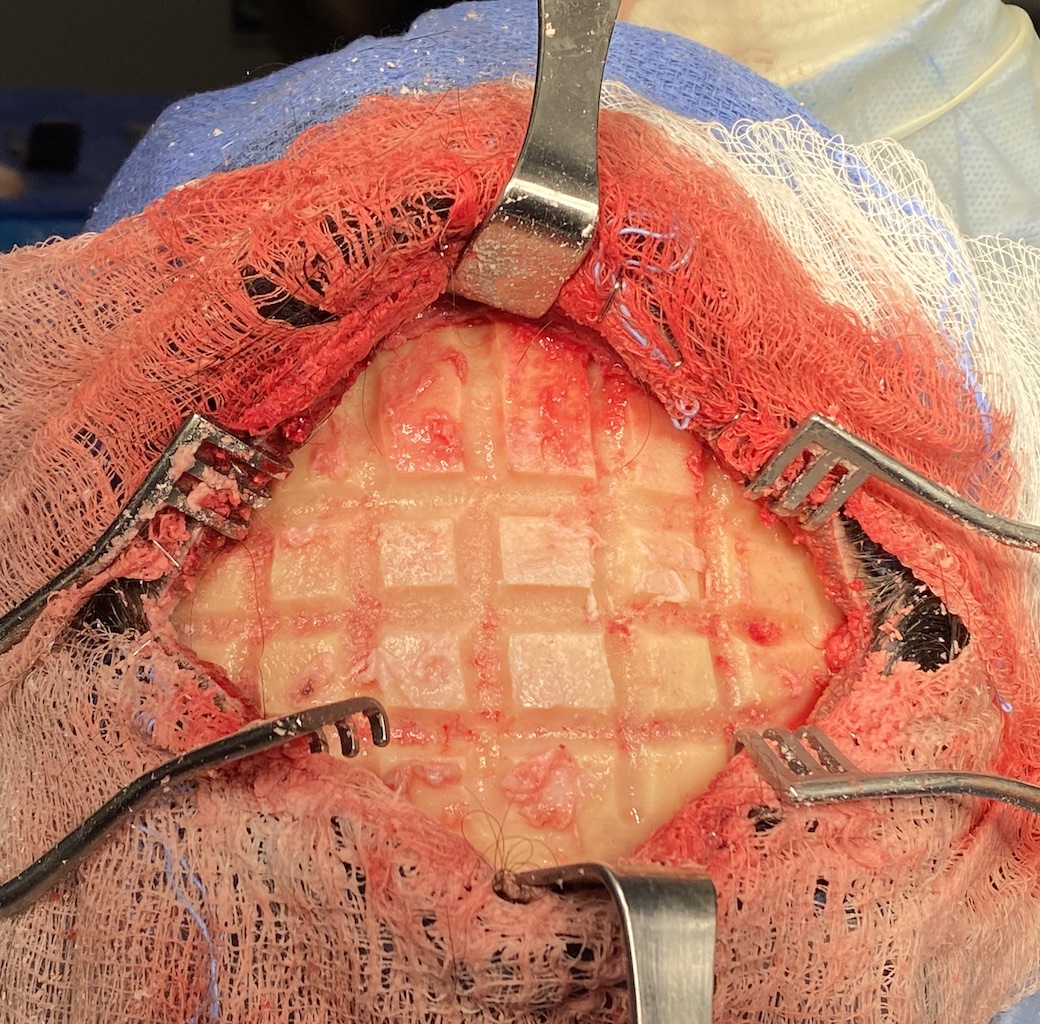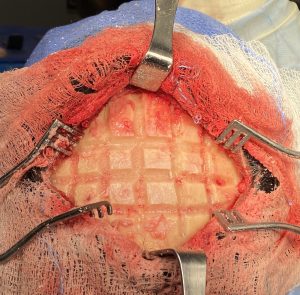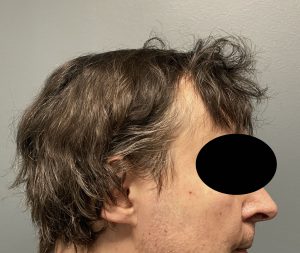Background: All bony areas of the craniofacial skeleton can be both augmented and reduced. As a general rule the amount of augmentation capability is greater than the ability to reduce it as greater amounts of implant thicknesses can be added than the thickness of the bone that can be removed. This is equally true for the skull even though its thickness is usually greater than almost any bone of the face. This is because the limitation of bone removal in the skull is that of the outer cortical layer. Once the middle layer of the skull is reached, the diploic space, the reduction needs to stop to preserve the inner cortical layer for protection of the underlying dura.
While the concept of outer cortical layer skull bone removal is straightforward, executing it to achieve a uniformly smooth skull surface is not. This is magnified by the limited visibility by which most skull reductions are done. Even in longer scalp incisions the full bony surface to be reduced is not seem. Looking under the scalp flaps is used but never is the full 3D shape of the bone surface to be reduced completely seen. As a result bone reduction techniques must be used that overcomes these limitations imposed by being an aesthetic procedure.
Case Study: This middle-aged male had long been bothered by the shape of the top of his head. He felt it had an unnatural bulge or convexity from behind his frontal hairline to tech crown area. Also he felt it was a bit wide particularly at the parieto-temporal areas.
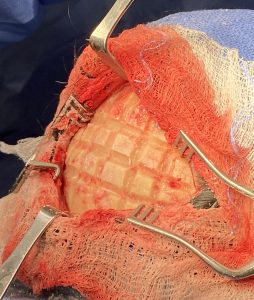
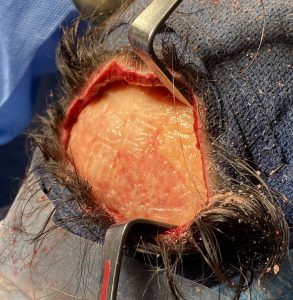

The hardest part of a large surface skull reduction is to get a consistent level of bone removal over the desired treatment area. Trying to just burr down by moving across a large bony area from side to side it is hard to be even and it is easy to get ‘lost’ and maybe even disoriented in the process. The grid pattern technique adds control and precision to the bone removal process.
Key Points:
1) Most skull reductions involve removal of the outer cortical bone layer down to the diploic space.
2) All large surface area skull reductions have a central area of deeper resection surrounded by a shaping technique to keep the surface curved rather than creating a flattening of the skull shape.
3) The grid pattern technique is the most precise method to get an even skull reduction over a large surface area.
Dr. Barry Eppley
World-Renowned Plastic Surgeon

